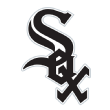We know we're not supposed to overreact to April numbers. But we do! It's part of our baseball fan DNA. Here are some non-rookie breakout performers from the season's first month. As a rule, they all probably will regress because they'll have been so good, but some are more legit than others.
Position players
 Eric Thames, Milwaukee Brewers He's not just some random dude having the best 30 days of his life. Thames returned from Korea as a complete hitter, with the third-lowest chase rate among qualified batters and the ability to drive the ball to all fields. Sure, eight of his 11 home runs have come against a suspect Reds pitching staff, but he's still hitting .293/.391/.573 against everyone else. That could be an approximation of what he does the rest of the season.
Eric Thames, Milwaukee Brewers He's not just some random dude having the best 30 days of his life. Thames returned from Korea as a complete hitter, with the third-lowest chase rate among qualified batters and the ability to drive the ball to all fields. Sure, eight of his 11 home runs have come against a suspect Reds pitching staff, but he's still hitting .293/.391/.573 against everyone else. That could be an approximation of what he does the rest of the season.
If this is what peak Gallo looks like, the Rangers will take it, even if he's hitting .205 with a 35 percent strikeout rate. He seemed to have stalled the past couple of years in the minors, but few guys hit the ball harder; he's fourth in average exit velocity, and four of his seven home runs have been “no-doubters,” according to the ESPN Home Run Tracker. If he can keep that K rate at 35 percent, he's going to connect enough to hit 35 home runs. I'm not completely sold just yet -- a 3-for-40 slump could still happen -- but he's at least earned a regular spot in the lineup somewhere, even when Adrian Beltre returns from the disabled list.
I wasn't sure about including Sano because he'd had a strong rookie season in 2015, but a disappointing 2016 left questions about his long-term upside. One thing I like: His chase rate is in Thames territory, ranking fifth lowest in the majors. But he always had pretty good plate discipline; what he still has, with a 33 percent strikeout rate, means there's a lot of swing-and-miss in his game. That's why his early .300 average isn't sustainable. He's hitting .450 on balls in play, and even as hard as he hits them, that's not going to keep up. Since 2010, 37 regulars have had a strikeout rate of at least 30 percent; the highest season average among those batters was Kris Bryant's .275 in 2015. The highest strikeout rate for a .300 hitter since 2010 was Nelson Cruz's 25 percent rate in 2015, when he hit .302. Sano will mash, but he's not a .300 hitter.
 Avisail Garcia, Chicago White Sox
Avisail Garcia, Chicago White Sox
This looks like a BABIP-driven start to me, with a .443 average on balls in play. His plate discipline remains as wretched as ever with a high chase rate, and his well-hit average isn't significantly improved from last season. He is hitting the ball in the air more often -- 30 percent versus 22 percent in 2016 -- so some of the power improvement might be legit, but if I owned him in fantasy, I'd be selling.
 Eugenio Suarez, Cincinnati Reds
Eugenio Suarez, Cincinnati Reds
I've liked him since he came up with the Detroit Tigers, and I didn't understand why they traded him for Alfredo Simon before giving him more opportunities. He had a mini-breakout last year with 21 home runs, but now he's hitting .325/.411/.602. The walks are up, the strikeouts are down and the well-hit average is way up. At 25, he looks stronger, and if the improved plate discipline holds, he's going to attack more hittable pitches. He's not a 1.000 OPS guy -- I mean, he's not David Ortiz just yet -- but I could see him improving from last year's .728 to .850 or so.
Souza was part of the three-way deal with the Washington Nationals and San Diego Padres in December 2014 that's mostly remembered for the Padres sending Trea Turner to D.C. His first two seasons in Tampa were disappointments as he hit .237 with 303 strikeouts and not enough home runs to make up for the below-average .310 OBP. Is he a late bloomer at 28? His strikeout rate is down from 34 percent the past two seasons to 27 percent, but as we showed above, he's not going to keep hitting .300 even with that improved rate. I don't see anything in his numbers that suggests he's doing something different. He's an extreme pull hitter who doesn't hit enough fly balls.
Starting pitchers
Considering I had Nova on my preseason breakout list for pitchers along with the next three guys, I'm totally buying into this performance. His new approach under pitching coach Ray Searage is simple: throw strikes. He's walked one batter in 36 innings so far this season. Since joining the Pirates last August, Nova has 74 strikeouts and just four walks. His K rate isn't high, but he's top-20 in ground ball rate, and escaping Yankee Stadium has helped limit some of the home runs. His FIP is 2.67, and I think he'll keep that ERA under 3.00 all season.
 James Paxton, Seattle Mariners
James Paxton, Seattle Mariners
Paxton was an easy call as a breakout candidate since he really had it in the second half of last season. His big April confirms that was for real as he spun scoreless outings in four of his first five starts. He pounds the zone, limits home runs and throws harder than any lefty starter in the majors. If he can avoid injuries -- a big if in his career -- he looks a lot like peak David Price to me.
 Dylan Bundy, Baltimore Orioles
Dylan Bundy, Baltimore Orioles
He's added a slider to his arsenal, and that's allowed him to complete the conversion from bullpen to starter in his first full season in the rotation. Impressively, three of his six starts have come against the Boston Red Sox, and he's allowed just five runs in 20.1 innings. Cause for caution, however: just 25 K's in 39 2/3 innings. The slider is a big swing-and-miss weapon, but the fastball has generated just a 12 percent miss rate. The other big issue is durability. Can he hold up for 30 starts? Good signs here, but still some red flags moving forward.
 Jameson Taillon, Pittsburgh Pirates
Jameson Taillon, Pittsburgh Pirates
I'm a little surprised the walks are as high as they are, but he does a good job generating grounders with his fastball/curveball combo. He uses his changeup as his third pitch but throws it only 10 percent of the time. As with Bundy, and even Paxton, we have to see if Taillon can hold up over 30 starts, but I expect by the end of the season we'll be calling Taillon -- and not Gerrit Cole -- the Pirates' ace.
 Luis Severino, New York Yankees
Luis Severino, New York Yankees
This one is more of a shocker, given his 5.83 ERA last season and 11 home runs allowed in 71 innings. He is still giving up the long ball -- six in 32 2/3 innings -- but he's not compounding that with walks, as he has just six to go with 36 strikeouts. There's no change in his fastball/slider/changeup repertoire; he's simply not beating himself as often. Severino also wasn't as sharp in Monday's loss to the Toronto Blue Jays, and we'll have to see if he's really figured out how to get lefties. They slugged .524 off him last year but are hitting .179 this year thanks to a .167 BABIP. He's always had good stuff and is maybe learning to trust it. There may be more upside here than with Bundy or Taillon, but I'd also expect a wider range of outcomes.
 Mike Foltynewicz, Atlanta Braves
Mike Foltynewicz, Atlanta Braves
The right-hander brings big-time velocity with an average fastball of 94.5 mph that can touch 98, and his 2.83 ERA through five starts seems to indicate he's turned the corner. Beware early season ERA: Three of his 11 runs are unearned, and his peripherals are essentially the same as last year, except with fewer hits allowed. Credit the Braves for their patience with him since 2015, as he looks like he'll be a nice mid-rotation starter. If the command ticks up a grade, maybe there's more upside left.
Relief pitchers
 Archie Bradley, Arizona Diamondbacks: Once one of the prized pitching prospects in the minors, Bradley has simply walked too many guys in his career. Moved to the bullpen, he's been dominant in a multi-inning setup role. Some are already calling for him to replace Fernando Rodney as closer, while the D-backs have said his long-term future remains as a starter. Notably, with Shelby Miller out, the D-backs are keeping Bradley in the pen. There's no reason he won't continue to excel in that role.
Archie Bradley, Arizona Diamondbacks: Once one of the prized pitching prospects in the minors, Bradley has simply walked too many guys in his career. Moved to the bullpen, he's been dominant in a multi-inning setup role. Some are already calling for him to replace Fernando Rodney as closer, while the D-backs have said his long-term future remains as a starter. Notably, with Shelby Miller out, the D-backs are keeping Bradley in the pen. There's no reason he won't continue to excel in that role.
 Tommy Kahnle, Chicago White Sox: We've heard this story a million times. Guy throws hard, guy can't throw strikes. Kahnle has bounced around the majors since 2014, first with the Rockies, then last year with the White Sox. Now he's not only throwing harder, averaging 98 on his fastball and hitting 100 a few times, but he's throwing strikes with a 19-1 strikeout/walk ratio in nine innings. Kahnle said a new leg kick and a focus on keeping his head on a straight line have improved his command. It's only a month, but he looks like he's turned into one of the American League's best setup guys, possibly freeing up the White Sox to trade Nate Jones or David Robertson.
Tommy Kahnle, Chicago White Sox: We've heard this story a million times. Guy throws hard, guy can't throw strikes. Kahnle has bounced around the majors since 2014, first with the Rockies, then last year with the White Sox. Now he's not only throwing harder, averaging 98 on his fastball and hitting 100 a few times, but he's throwing strikes with a 19-1 strikeout/walk ratio in nine innings. Kahnle said a new leg kick and a focus on keeping his head on a straight line have improved his command. It's only a month, but he looks like he's turned into one of the American League's best setup guys, possibly freeing up the White Sox to trade Nate Jones or David Robertson.



